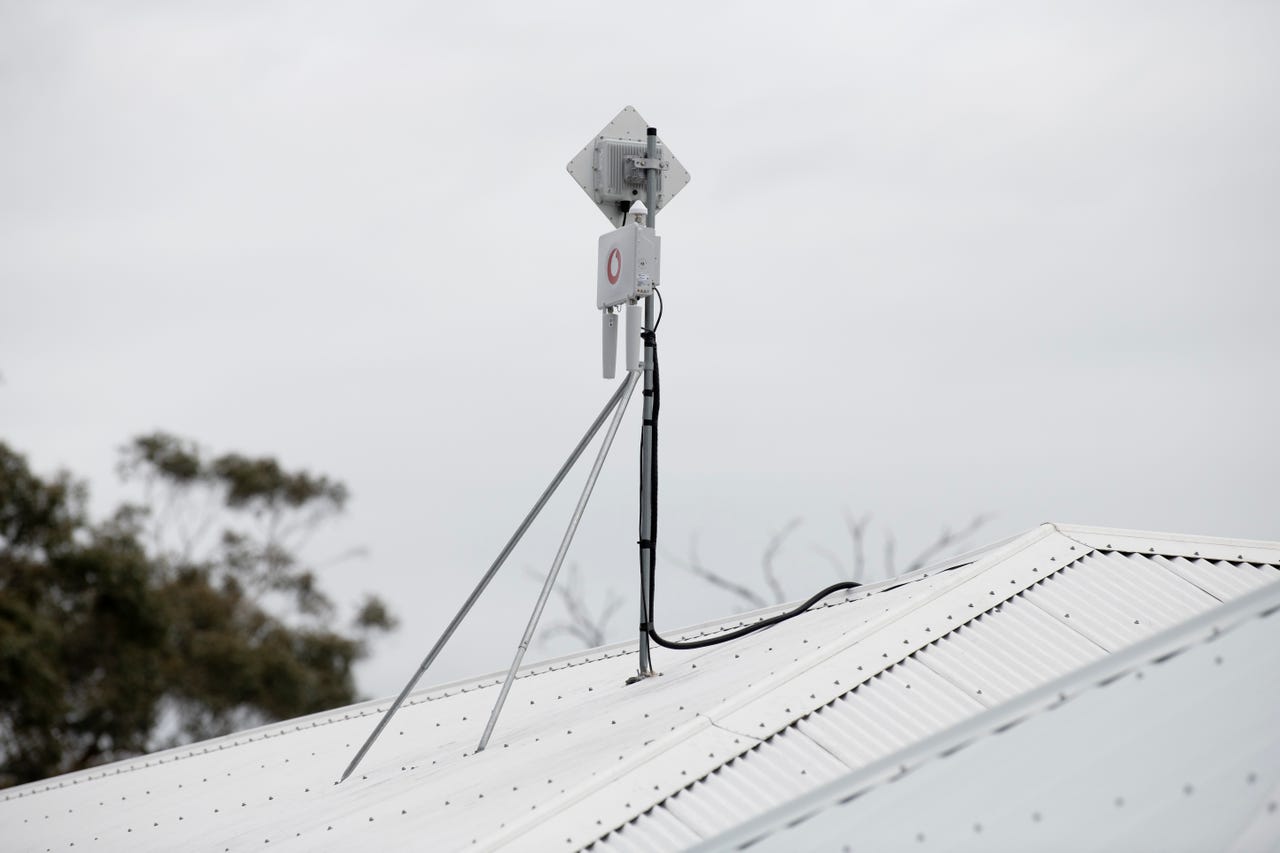Vodafone trials regional 4G coverage tech


Vodafone Australia has unveiled its new technology for helping improve mobile signal for voice, data, and Internet of Things (IoT) in regional areas, with its Vodafone Regional Coverage Hub.
The telco said it has successfully trialled two of its devices -- which are the size of a modem -- in Ballarat, Victoria. The devices are self-installed on users' rooftops or exterior walls, and then plugged into power sources and existing broadband connections.
Each device was able to deliver 4G coverage to more than 8km square on a potato farm in the region during the trial, Vodafone claimed.
"The plug-and-play device delivers 4G voice and data services in locations where commercial networks are not traditionally deployed, or where coverage is patchy or unavailable," Vodafone said.
"It also provides Internet of Things (IoT) connectivity, giving farmers the opportunity to evolve and automate their processes via agriculture and farming IoT solutions."
According to Vodafone CTO Kevin Millroy, making the solution self-installable means customers are no longer dependent on mobile operators to connect them.
"It gives them the power to get mobile coverage quickly and easily, without needing to wait for a mobile tower to be built or existing infrastructure to be made available for collocation near their property," Millroy said.
Vodafone is expecting to make its Regional Coverage Hub available in the second half of 2019, with the technology being developed in partnership with Nokia.
"This is a great demonstration of how an innovative approach can result in improved coverage and deliver new opportunities for operators and consumers," a Nokia spokesperson said.
"Quicker and easier deployment is a key factor to reduce network cost and improve services."
According to Vodafone's first-half financial results for FY18, announced in July, the telco has reached almost 5.98 million mobile customers after adding 294,000 new subscriptions in the six months to June 30.
Vodafone had launched its narrowband IoT (NB-IoT) network almost a year ago.
In the six months to June 30, Vodafone Hutchison Australia clocked a total net loss of AU$92.3 million, which it said was 17 percent higher than the loss recorded for the first half of FY17.
Total revenue grew by 7 percent year on year to AU$1.8 billion for the first half of FY18, while earnings before interest, tax, depreciation, and amortisation (EBITDA) reached AU$510 million, a rise of 7 percent.
Vodafone at the time said it will spend more than AU$1.3 billion on its network and technology during 2018, including adding over 1,200 new mobile sites and upgrading its mobile network, with the telco lagging Optus and Telstra on regional coverage.
Last week, however, Vodafone Australia announced that it would proceed with its merger with TPG -- after confirming that they had entered discussions a week earlier -- to form a telecommunications giant that they say will have an enterprise value of around AU$15 billion.
"With the merger of the two companies, I think we are going to be a leading challenger, and we are going to be very aggressive; we are going to bring value to the consumer," TPG CEO David Teoh told media last week.
"We have put a lot of money in the spectrum and in the planning on our start to roll out a very dense mobile network."
The new TPG will see current Vodafone Australia CEO Inaki Berroeta serve as CEO and Teoh as chair, and will produce revenue of AU$6 billion, EBITDA of AU$1.8 billion, and have an operating free cash flow of AU$900 million, the companies have claimed.
It will be owned 50.1 percent by Vodafone Australia shareholders and 49.9 percent by TPG shareholders, and expects to hold 20 percent of the Australian mobile market, and 22 percent of the fixed-line broadband market upon merging.
"The merger will create a more effective challenger to Telstra and Optus, with an integrated fixed and mobile offering and a pro forma enterprise value of approximately AU$15 billion," the companies said in a joint announcement.
Prior to the merger announcement, TPG had been set to launch its AU$1.9 billion Australian mobile network in the second half of 2018 across Sydney, Melbourne, and Canberra, with the telco in March announcing the installation of sites in Sydney and Melbourne.
TPG currently wholesales Vodafone's 4G network under a AU$1 billion deal that also involved TPG building out a 4,000-kilometre fibre network for Vodafone to launch a fixed-line National Broadband Network (NBN) offering.
Related Coverage
TPG-Vodafone will be 'very aggressive': David Teoh
The new TPG could offer plans that are 'even better' than its previously advertised AU$9.99 per month mobile service, David Teoh has said, once the merger completes and it can offer bundled fixed and mobile deals.
TPG and Vodafone Australia to merge into AU$15b telco named TPG
TPG and Vodafone Australia have reached an agreement to merge their businesses to form a telecommunications giant with an approximate enterprise value of AU$15 billion.
Vodafone mobile subs near 6m after including Kogan in numbers
Vodafone has announced a net loss of AU$92 million on revenue of AU$1.8 billion for the first half of 2018.
Vodafone expands NBN rollout; launches Vodafone TV
Adelaide, Perth, Brisbane, the Gold Coast, and Tasmania will gain access to Vodafone Australia's NBN offerings, with the telco also launching a smart TV box running on Android TV.
Edge computing: A cheat sheet (TechRepublic)
Edge computing is when you generate, collect, and analyze data where the data is generated. To learn more about edge computing, IoT and big data experts and leaders should read this guide.
Hiring kit: Android developer (Tech Pro Research)
Companies are increasingly dependent on mobile platforms to power their business operations and to enable a productive workforce - and that means hiring top-notch developers to build the apps they need.